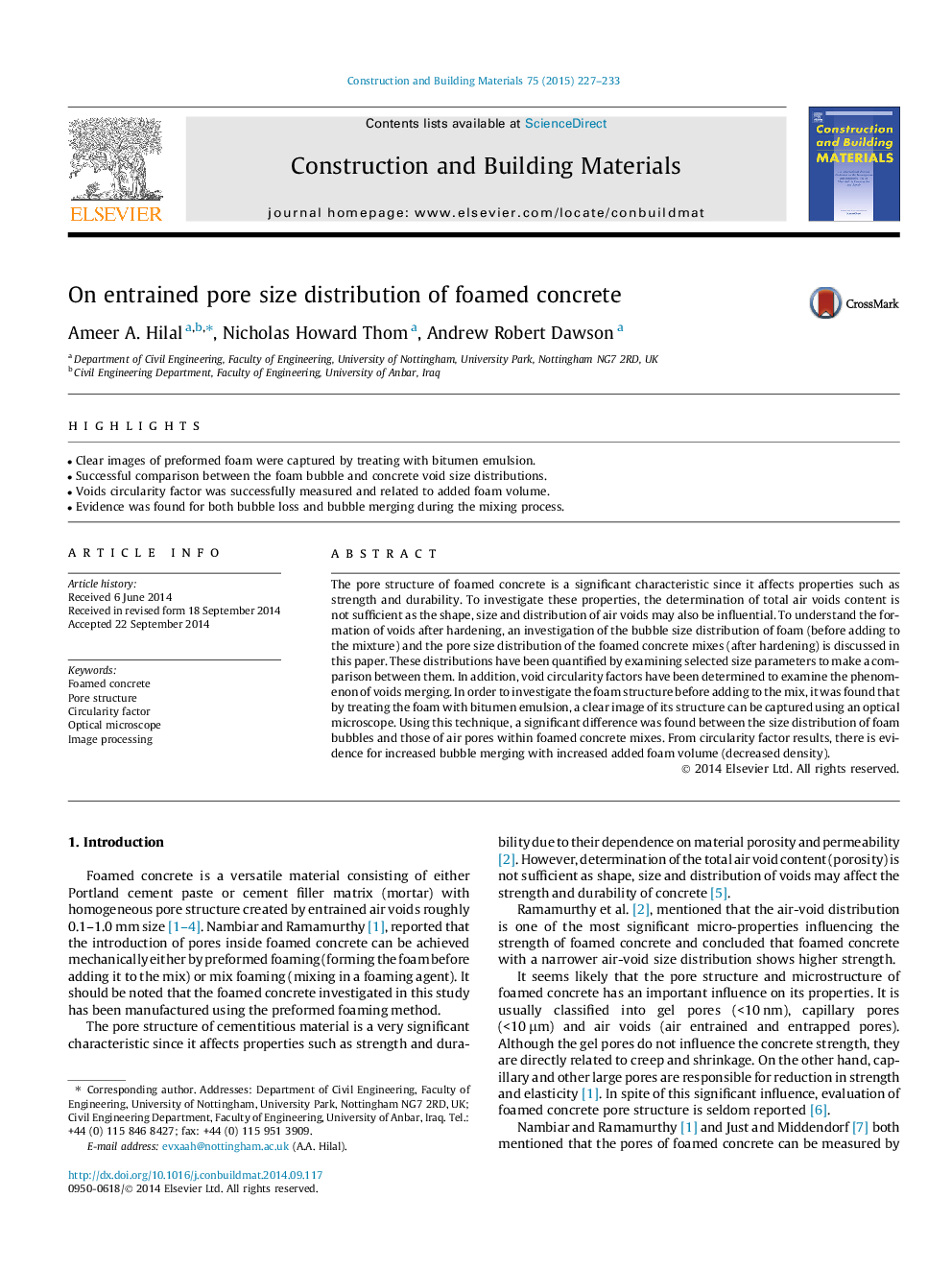| Article ID | Journal | Published Year | Pages | File Type |
|---|---|---|---|---|
| 6721775 | Construction and Building Materials | 2015 | 7 Pages |
Abstract
The pore structure of foamed concrete is a significant characteristic since it affects properties such as strength and durability. To investigate these properties, the determination of total air voids content is not sufficient as the shape, size and distribution of air voids may also be influential. To understand the formation of voids after hardening, an investigation of the bubble size distribution of foam (before adding to the mixture) and the pore size distribution of the foamed concrete mixes (after hardening) is discussed in this paper. These distributions have been quantified by examining selected size parameters to make a comparison between them. In addition, void circularity factors have been determined to examine the phenomenon of voids merging. In order to investigate the foam structure before adding to the mix, it was found that by treating the foam with bitumen emulsion, a clear image of its structure can be captured using an optical microscope. Using this technique, a significant difference was found between the size distribution of foam bubbles and those of air pores within foamed concrete mixes. From circularity factor results, there is evidence for increased bubble merging with increased added foam volume (decreased density).
Related Topics
Physical Sciences and Engineering
Engineering
Civil and Structural Engineering
Authors
Ameer A. Hilal, Nicholas Howard Thom, Andrew Robert Dawson,
